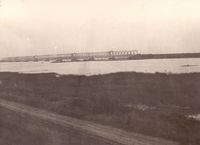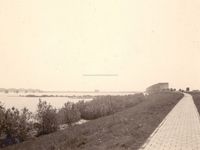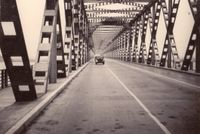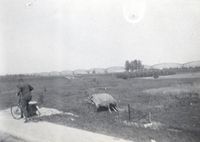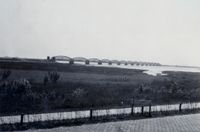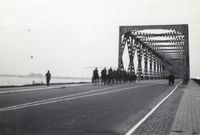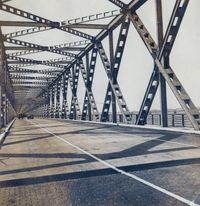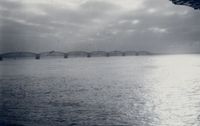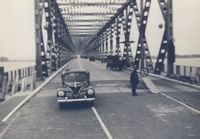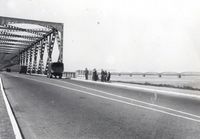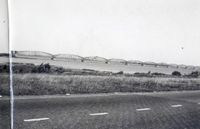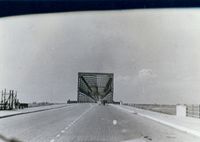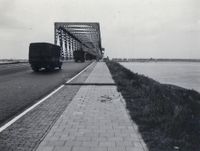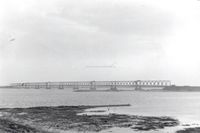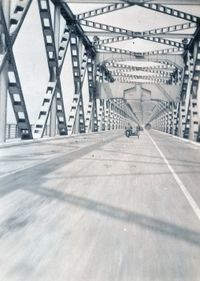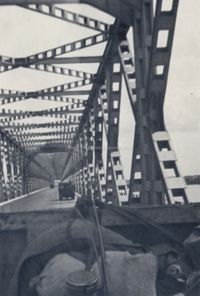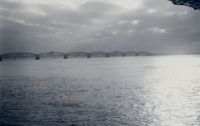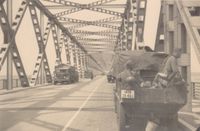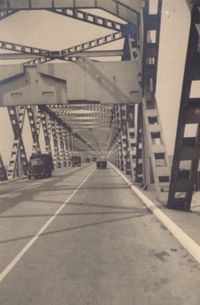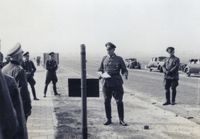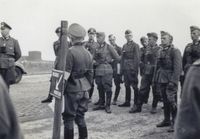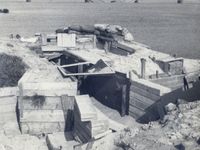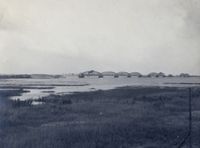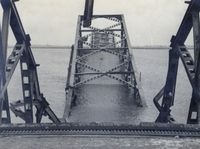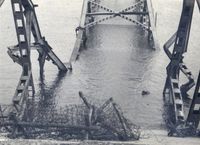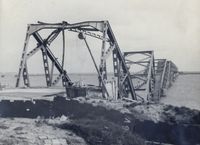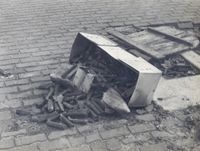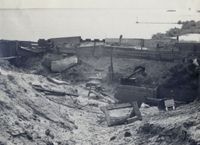Moerdijk bridges.
On this page, you will find original photographic material of the Moerdijk bridges during World War II. The photos showcase many interesting details. The Moerdijk bridges were already of great importance to the Germans in May 1940 for their advance towards Rotterdam and The Hague. Heavy vehicles such as tanks posed no problem for the strong traffic bridge over the Hollandsche Diep.
A few photos appear to show some bunkers, and on some, the anti-aircraft emplacements can be seen atop the bridge (e.g., photo 1). The bridges were a popular photo-subject for German soldiers responsible for bridge security. Many German vehicles also passed over the bridges during the war, often prompting soldiers to take snapshots from their vehicles.
Lastly, several measures taken by the Dutch army to block the traffic bridge during mobilization can be observed. They included a barrier that could be lowered onto the bridge itself to prevent vehicles from crossing. At the beginning of the bridge, barriers could also be placed to deny access, particularly to vehicles. In November 1944, both bridges were blown up after the Germans had retreated from them.
Below you will find interesting photos from the photo collection of General Erich Höcker. These photos are related to the other photos on the page "Dordrecht and surroundings," including the Scheffersplein and Bosboom Toussaintstraat. However, these photos were taken earlier, on July 26, 1941. Various German military personnel can be seen in the photos, although most of them belong to the "Heer," the German Army. In the first photo, on the left in the background, two soldiers from the Luftwaffe can also be seen. Additionally, in the center, we see General Erich Höcker, the division commander of the 719th Infantry Division, holding a topographic map. The back of the photo also mentions Regimental Commander Major Neumann, possibly the person on the right in the photo.
In the other photos, we can see that some German military personnel are wearing white bands on their headgear, indicating that this may be a military exercise. This is also confirmed on the back of one of the photos. A keen observer may also notice a large sign in the middle of the second photo that says "Fotografieren verboten" (photography prohibited). Apparently, this did not apply to German military personnel, but it does suggest that the Germans had taken measures to restrict photography of military facilities at the Moerdijk bridges by civilians.
In the last photo, we can just see a bunker between a German officer and the group. For more information about Division Commander General Erich Höcker, please refer to the other photos on the "Dordrecht and surroundings" page.
On September 17, 1944, Operation Market-Garden began in the Netherlands. It was an operation involving airborne units tasked with securing important bridges along the advance route to Arnhem, as well as ground troops who would advance into Germany using the captured bridges. The operation ultimately failed, as the bridge at Arnhem proved to be "a bridge too far." However, large parts of the province of North Brabant were liberated by the Allies after intense fighting. On October 20, 1944, Operation Pheasant began, with British, Canadian, Polish, and American troops aiming to liberate the rest of western and central Brabant.
As the Allies approached the village of Moerdijk, the German forces felt a growing urgency to get as much heavy equipment and troops across the bridges as possible. Approximately 400 German soldiers remained behind to defend the village and give the remaining units a chance to evacuate via the bridge to Fortress Holland. On November 6, 1944, the traffic bridge at Moerdijk was blown up, destroying several segments of the bridge to prevent the Allies from reaching the other side. On November 17, the railway bridge was also destroyed. The remaining German troops on the other side of the bridge surrendered.
The photos below show the destroyed bridges over the Hollandsche Diep. The photos were most likely taken after the liberation. The German fortifications on the Willemsdorp side, also visible in the photos, were likely destroyed by the Germans themselves or heavily damaged by Allied artillery fire. These images are unique, as photos of the blown-up bridges are not very common compared to the snapshots taken by German soldiers of the bridges.
©2017-2025 :Https://www.Dordrechtindeoorlog.nl: ( There is a copyright on the content of this website. This content is not to be shared, duplicated or published withouth the explicit permission of the author of this website. If you have any requests you can email to: Info@Dordrechtindeoorlog.nl or look on : www.dordrechtindeoorlog.nl/termsofuseforthecontentonthiswebsite.
*1 Source: Canon van Moerdijk. en Museum19401945.nl
